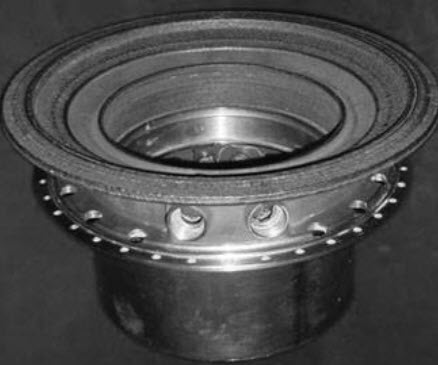Advances in ‘laser solid forming’ to produce 3D-printed metallic parts
October 13, 2014

Hybrid inconel 718 nickel-chromium alloy casing for an aircraft engine, combining laser-solid-forming additive manufacturing and conventional casting (credit: Weidong Huang and Xin Lin/3D Printing and Additive Manufacturing)
Researchers Weidong Huang and Lin Xin from China’s Northwestern Polytechnical University describe their progress with 3D-printed metallic parts, using laser solid forming (LSF) technology, in an open-access (until Nov. 9) review article in 3D Printing and Additive Manufacturing, a peer-reviewed journal from Mary Ann Liebert, Inc., publishers.
The authors review research advances toward the goal of developing LSF — an additive manufacturing technique that uses laser cladding with synchronously feeding metal powders to create fully dense metal parts with mechanical properties similar to those produced by casting or forging.
“Additive manufacturing technologies have a global reach that is impacting the manufacturing landscape worldwide, and it is critical that both technology developers and users across the planet keep abreast of each other’s progress,” says Editor-in-Chief Hod Lipson, PhD, Professor at Cornell University’s Sibley School of Mechanical and Aerospace Engineering..